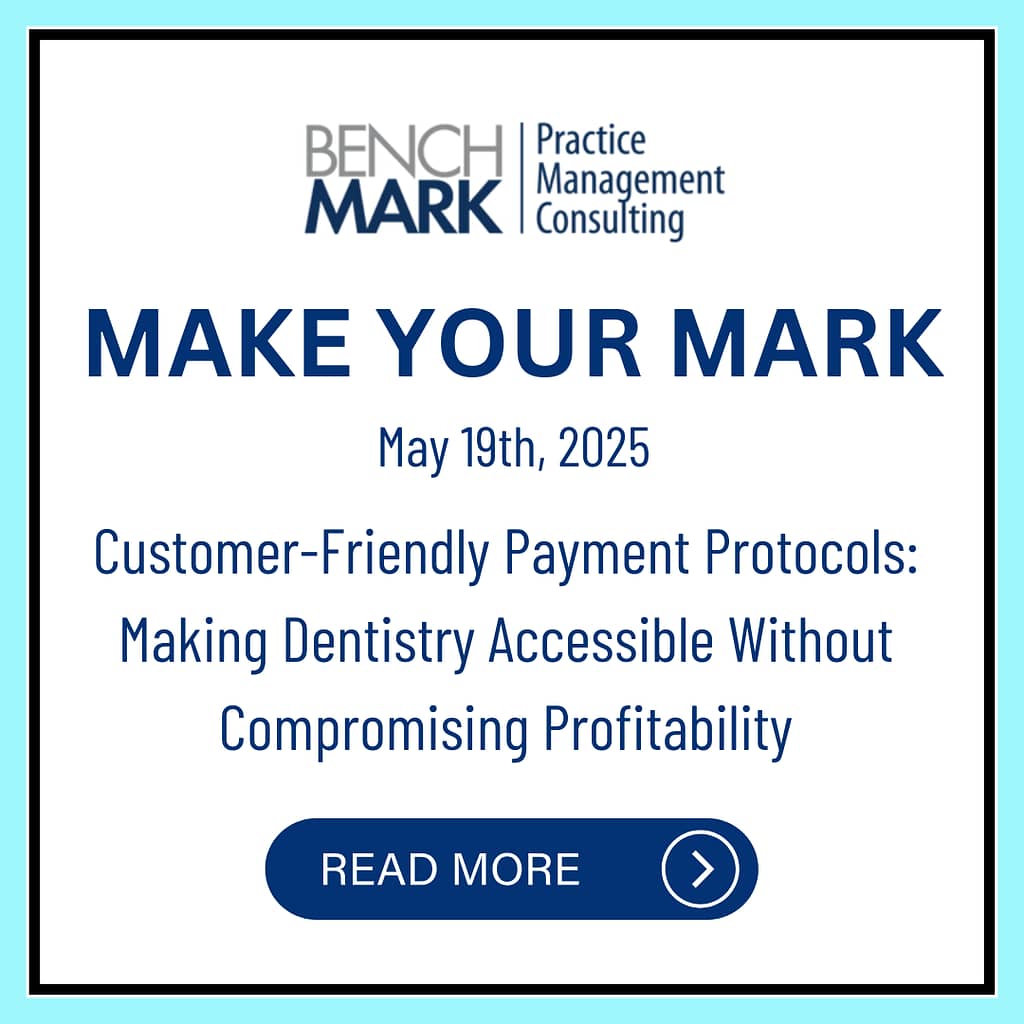[NOTE]: This month we are offering a 4-part series on “economy proofing” your practice..
This is the third article in the series.
When the economy tightens, patients become more cautious about discretionary spending — including and especially dental care.
But…
Oral health isn’t optional, and your practice can’t afford to see a decline in treatment acceptance. That’s where thoughtful, customer-friendly payment protocols come in.
This third installment of our Economy-Proofing Your Practice series explores how to design systems that reduce friction, help patients say “yes” to care, and protect your revenue without sacrificing your values.
Meet Patients Where They Are Financially
Today’s patients want clarity and convenience when it comes to costs. Gone are the days of vague estimates or last-minute billing surprises. Instead, practices need to offer a transparent conversation early in the treatment process.
The conversation(s) should include outlining the full cost of treatment, what insurance may or may not cover, and most importantly what flexible payment options are available.
Offering options like insurance assignment can significantly reduce the patient’s perceived barrier to care. When patients understand that their benefits are being directly applied, they feel less pressure to cover the full cost upfront.
This practice-friendly approach also helps maintain cash flow, as it avoids unnecessary delays caused by patients having to wait for reimbursements or juggle unexpected costs.
Flexibility That Doesn’t Feel Complicated
Economy-proofing doesn’t mean discounting your services, it means making it easier for people to pay for the value you provide. Offering multiple payment options such as debit, credit, third-party financing, and pre-authorized monthly payments, gives patients control over how they manage their investment in oral health.
To go a step further, review your internal billing policies to remove unnecessary friction. Are you offering pre-treatment estimates promptly? Are payment expectations clearly outlined at the start — not just at the front desk, but by your treatment coordinator and hygiene team too?
Remember, the more cohesive your messaging and methods, the more trust you build.
Empower Your Team with Payment Confidence
A key piece to making payment protocols effective is ensuring your team feels confident and comfortable discussing finances. Train your front desk, treatment coordinators, and even hygienists in simple, non-judgmental language that supports financial clarity.
Avoid phrases like “it’s expensive” or “I know this is a lot” and replace them with, “Let’s go over your options together” or “Here’s how we can make this work within your budget.”
The goal isn’t to sell — it’s to support.
This is key, and worth stating again… the goal isn’t to sell, it’s to support. When the team presents payment options as a natural part of the treatment experience (rather than a barrier at the end), patients are less likely to delay or decline the care they need.
A Final Polish…
Offering customer-friendly payment protocols is one of the smartest ways to keep your schedule full and your accounts healthy, especially in uncertain financial climates. It’s not about lowering your fees; it’s about removing the confusion and hesitation that can stand in the way of care.
When you make paying easier, clearer, and more collaborative, you strengthen both your patient relationships and your bottom line.
In our final article of this series, we’ll explore the importance of consistent verbiage across your entire team and how it can make or break the patient experience when the economy adds stress to every conversation.




